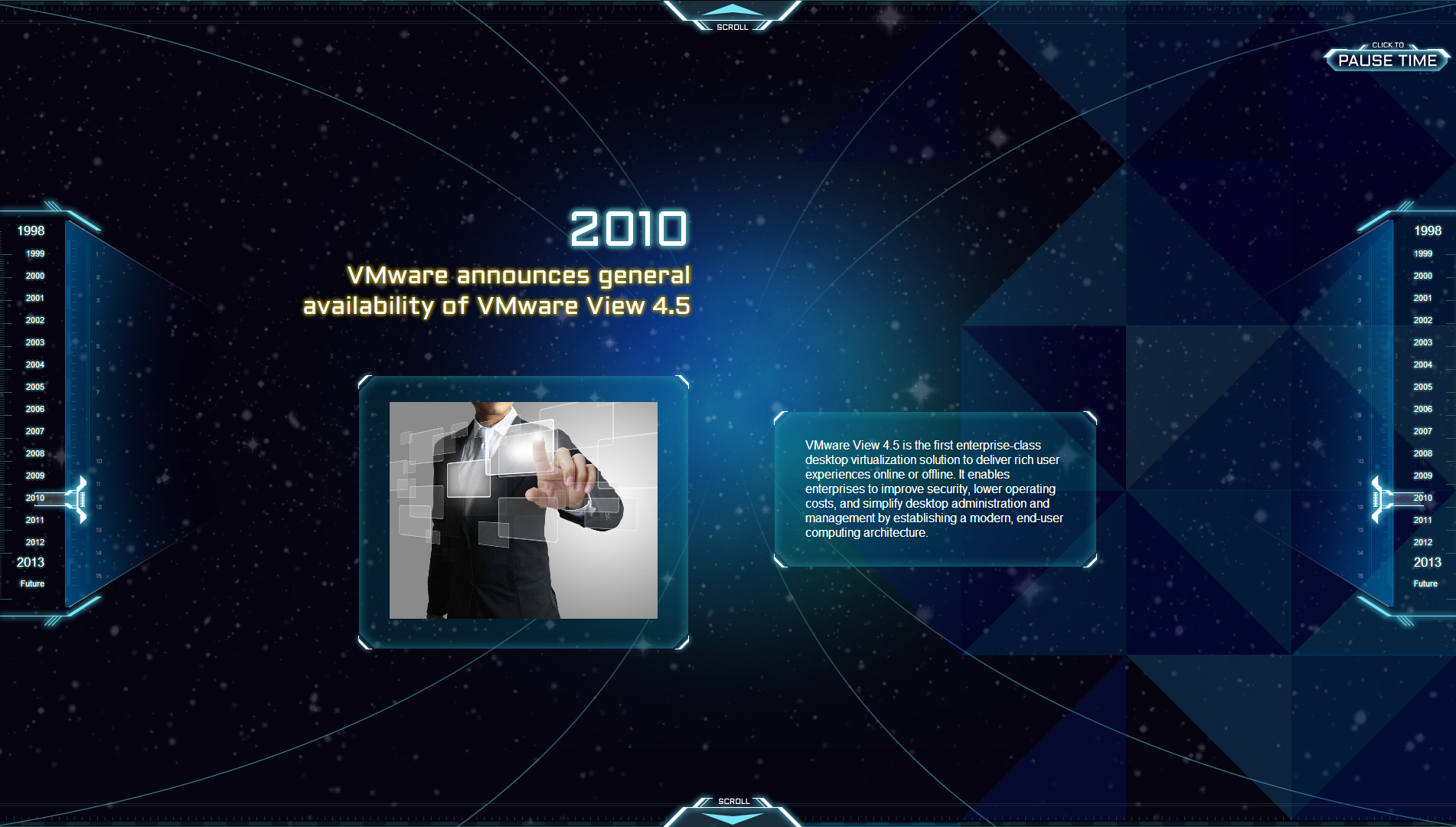15 years of virtualisation - what's next for VMware
VMware announces the next steps in turning virtualisation into a cloud solution

This week marks 15 years since VMware first offered a way to run one operating system virtually inside another OS. It's celebrating with an app showing key dates from its history on an interactive timeline – and with key announcements at the VMworld conference.
At last year's event, VMware talked about the 'software-defined data centre,' which product marketing manager Rory Choudhuri explains as having "all the infrastructure virtualised, delivered to the users as a service and with the control also automated by software".
This is part of what VMware calls the third generation of IT, going from the mainframe and client-server environments to virtualising the whole of IT.
"In order to achieve the kinds of performance, responsiveness and application control that businesses wat," Choudhuri told us, "IT has to become automated." Standardising, monitoring and dealing with hardware problems before they bring your system down lets you make your IT team more productive; VMware is quoting figures from the Taneja group that suggest they could be up to 67% more productive if you automate moving apps, workloads and data access as necessary.
Thinking about apps
He suggests thinking about enterprise apps the way you do an app store for smartphones with thousands of apps available to choose from. "One customer told me recently that they're looking for a Google-like environment where they have everything at their fingertips. They want to be Google-like but they want to conform to enterprise IT requirements.
It should not take you weeks or months to provision a production environment, but it does today for many customers." He also says VMware has to support all operating systems and hypervisors, including those from rival Microsoft. "At the end of the day we ought to be able to interoperate and [what OS you chose to run] should be not more than a gentle ribbing over a beer."
Microsoft is also suggesting businesses use automation to turn their data centres and hosted systems into a private or hybrid cloud that connects with public cloud services. Its approach is based on the Datacenter Abstraction Layer (DAL), using Windows Server 2012 and Hyper-V (which include software-defined networking and storage virtualisation), System Center, PowerShell, and standards like the Distributed Management Task Force's Common Information Mode architecture (which work with more than just Windows Server. Not all those tools are mature yet, so VMware isn't far nehind in launching its own tools.
Are you a pro? Subscribe to our newsletter
Sign up to the TechRadar Pro newsletter to get all the top news, opinion, features and guidance your business needs to succeed!
Virtualizing your infrastructure
What VMware is talking about at VMworld is mainly the tools to virtualise your infrastructure; there will be more details about its management tools at the VMware Europe conference in October. It's launching VMware NSX, its software-defined networking platform; this lets you virtualise network services like your firewall or intrusion protection so you can run them in your hypervisor rather than on expensive specialised network hardware.
Also available is version 5.5 of the vCloud Suite. This adds high availability for disaster recovery, big data extensions to support Hadoop and the ability to virtualise flash memory on your server so you can share it between applications (which it says will speed up VDI in particular), plus more automation and management features, like being able to see which VMs are over-provisioned and when you're going to run out of capacity on your servers. Interestingly, as well as supporting the latest Xeon E5 v2 CPUs, it will also run on servers based on the Atom C2000 CPU.
VMware is also announcing VMware Virtual SAN, a system for pooling storage and creating virtual storage area networks with vSphere and vCenter Server; this be available in beta in Q3 this year (probably in time for VMware Europe).
What VMware doesn't seem to be covering just yet is one of the business barriers to hybrid cloud; not just the per-CPU licencing for VMware itself but simplified licencing for the management software you need to make it work. The suggestion is that you will buy vCD vCAC XXX from VMware and run that on premise, but if you want it to work with VMware instances in a hosted service you can often find yourself having to pay your provider as well.
VMware has to balance what businesses need with what its partners are happy to support, but we'd like to see the company offer its management software as a cloud service businesses can subscribe to for managing VMware systems in-house, in public clouds and in hosted services.
That really would make the vCloud idea seamless, but VMware's recent licensing changes have been controversial, in many cases raising licensing costs rather than reducing them.
- Now why not find out how to choose the right anti-virus software for your business.
Mary (Twitter, Google+, website) started her career at Future Publishing, saw the AOL meltdown first hand the first time around when she ran the AOL UK computing channel, and she's been a freelance tech writer for over a decade. She's used every version of Windows and Office released, and every smartphone too, but she's still looking for the perfect tablet. Yes, she really does have USB earrings.